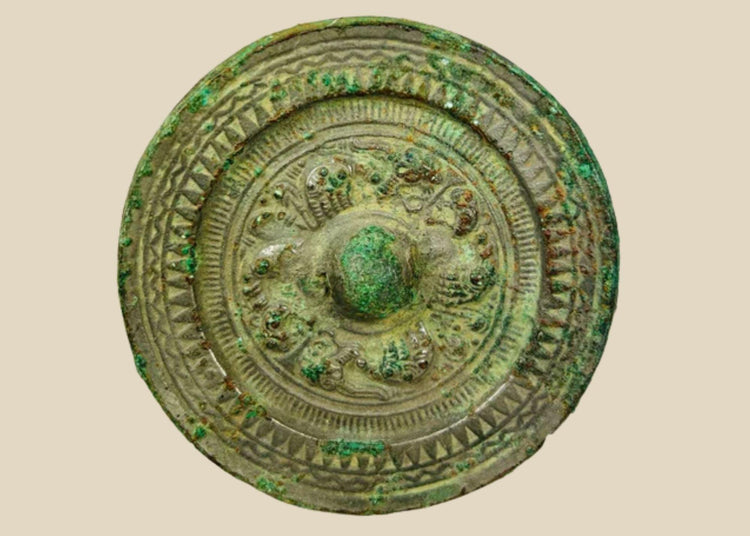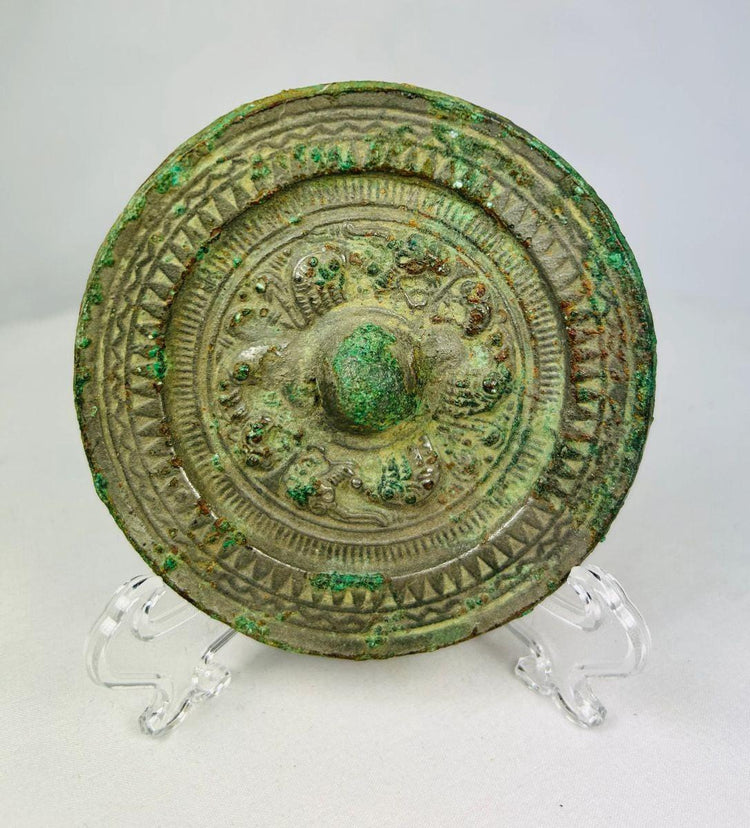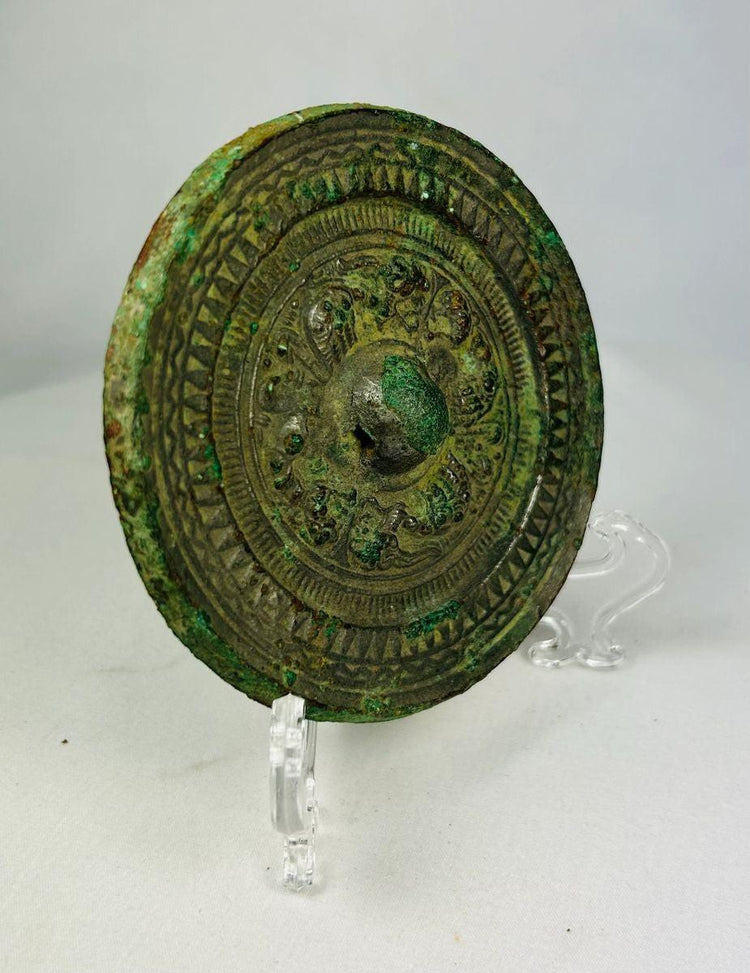Ancient Chinese | Bronze Mirror | Han Dynasty | Circa 206 BCE – 220 CE
Description
More
Less
xplHistorical Context & Origin
Region: Ancient China
Material: Cast bronze with engraved geometric and mythical motifs
Period: Han Dynasty (206 BCE – 220 CE)
Description
This finely cast bronze mirror exemplifies the artistry and symbolic depth of Han Dynasty craftsmanship. Used by the nobility and elite, mirrors were prized not only as grooming tools but also as powerful spiritual objects believed to ward off evil and reflect purity of both body and mind. The surface features intricate geometric patterns and raised motifs, with a central knob pierced for suspension or attachment of a silk cord. Its rich, aged patina testifies to centuries of burial, confirming both its authenticity and ritual significance. Bronze mirrors such as this were often interred in tombs, ensuring their owners retained beauty, status, and spiritual protection in the afterlife.
Features
- Intricately cast design with geometric and mythical motifs
- Central protruding knob with hole for cord or handle attachment
- Rich green patina from centuries of oxidation and burial
- Symbolic decoration signifying protection and good fortune
- Elite object of daily and spiritual significance
Cultural Significance
Bronze mirrors in the Han Dynasty symbolized more than refinement—they embodied spiritual power and status. Considered protective against evil forces, they also reflected the Confucian and Daoist ideals of clarity and harmony. Their frequent inclusion in elite burials illustrates their role in ensuring prosperity and beauty beyond life, while also serving as tokens of wealth and sophistication.
Condition
The mirror survives in excellent archaeological condition with a well-developed green patina and minor encrustations enhancing its authenticity. The decorative patterns remain visible, and the central knob is intact, preserving both its form and original function.
Dimensions (approximate)
Diameter: 3.75 in
Age
Over 1,800 years old
Learn More
See a Similar Han Dynasty Example at the British Museum
Read More About the Han Dynasty From the Smithsonian National Museum of Asian Art
Explore Our Curated Collection of Ancient Chinese Artifacts & Imperial Relics
Description
xplHistorical Context & Origin
Region: Ancient China
Material: Cast bronze with engraved geometric and mythical motifs
Period: Han Dynasty (206 BCE – 220 CE)
Description
This finely cast bronze mirror exemplifies the artistry and symbolic depth of Han Dynasty craftsmanship. Used by the nobility and elite, mirrors were prized not only as grooming tools but also as powerful spiritual objects believed to ward off evil and reflect purity of both body and mind. The surface features intricate geometric patterns and raised motifs, with a central knob pierced for suspension or attachment of a silk cord. Its rich, aged patina testifies to centuries of burial, confirming both its authenticity and ritual significance. Bronze mirrors such as this were often interred in tombs, ensuring their owners retained beauty, status, and spiritual protection in the afterlife.
Features
- Intricately cast design with geometric and mythical motifs
- Central protruding knob with hole for cord or handle attachment
- Rich green patina from centuries of oxidation and burial
- Symbolic decoration signifying protection and good fortune
- Elite object of daily and spiritual significance
Cultural Significance
Bronze mirrors in the Han Dynasty symbolized more than refinement—they embodied spiritual power and status. Considered protective against evil forces, they also reflected the Confucian and Daoist ideals of clarity and harmony. Their frequent inclusion in elite burials illustrates their role in ensuring prosperity and beauty beyond life, while also serving as tokens of wealth and sophistication.
Condition
The mirror survives in excellent archaeological condition with a well-developed green patina and minor encrustations enhancing its authenticity. The decorative patterns remain visible, and the central knob is intact, preserving both its form and original function.
Dimensions (approximate)
Diameter: 3.75 in
Age
Over 1,800 years old
Learn More
See a Similar Han Dynasty Example at the British Museum
Read More About the Han Dynasty From the Smithsonian National Museum of Asian Art
Explore Our Curated Collection of Ancient Chinese Artifacts & Imperial Relics
You May Also Like


































